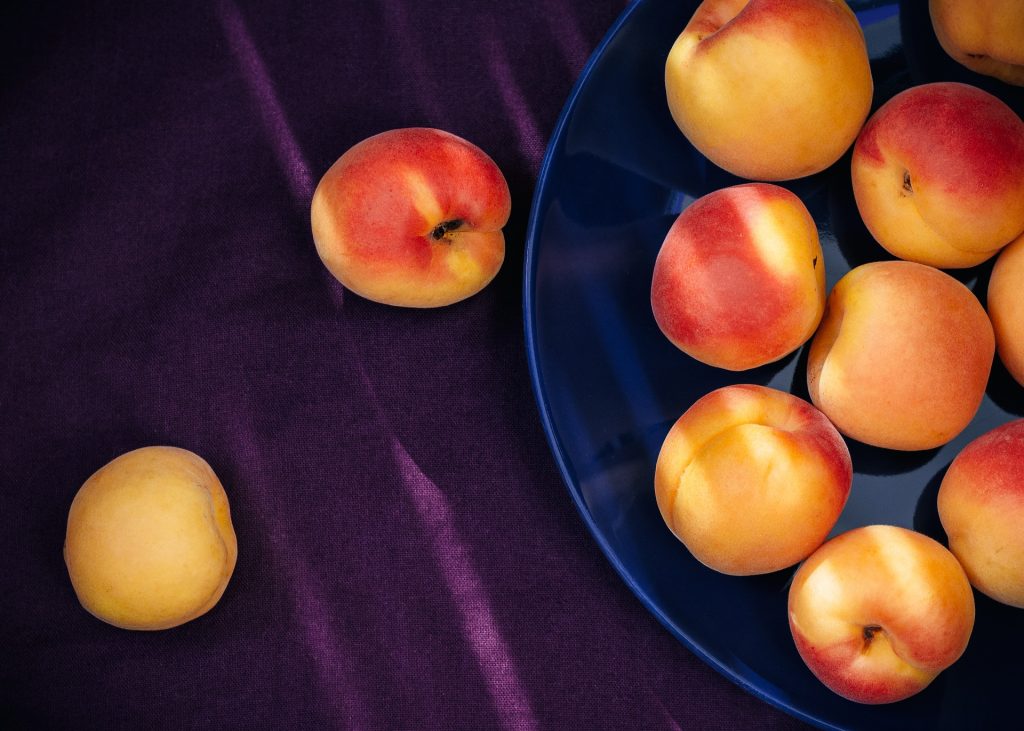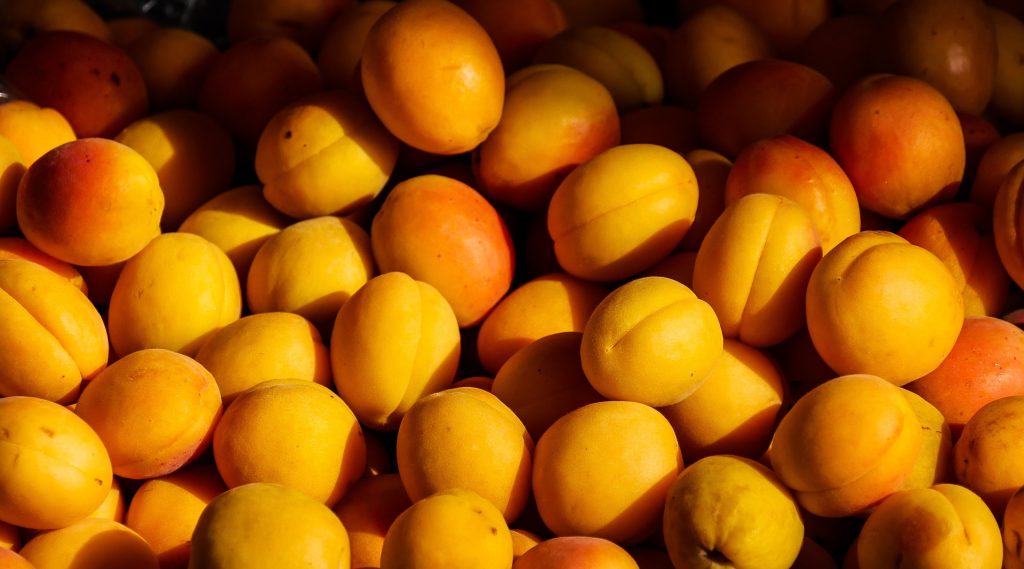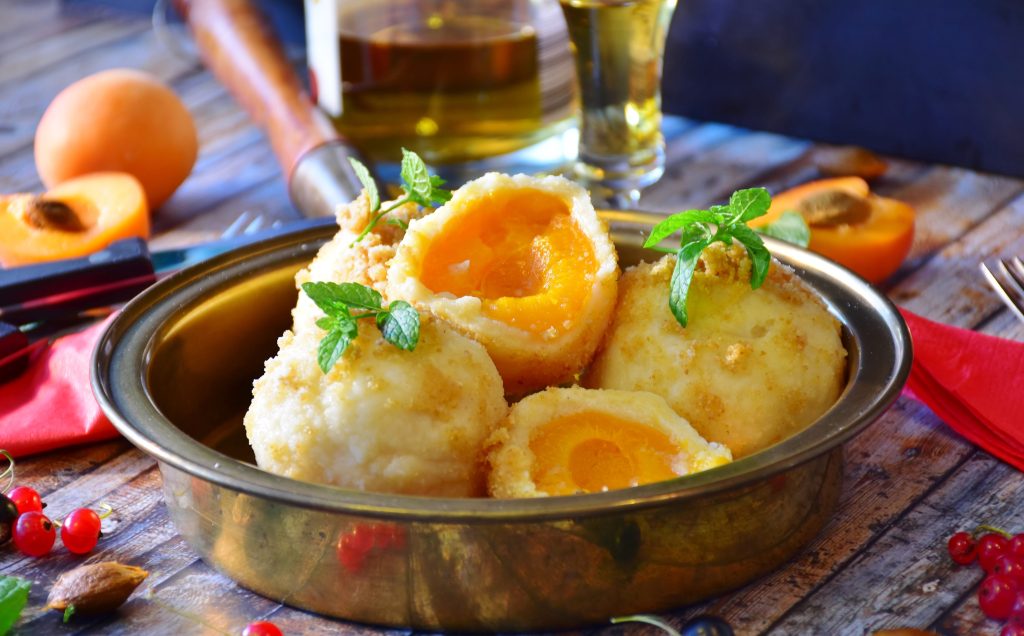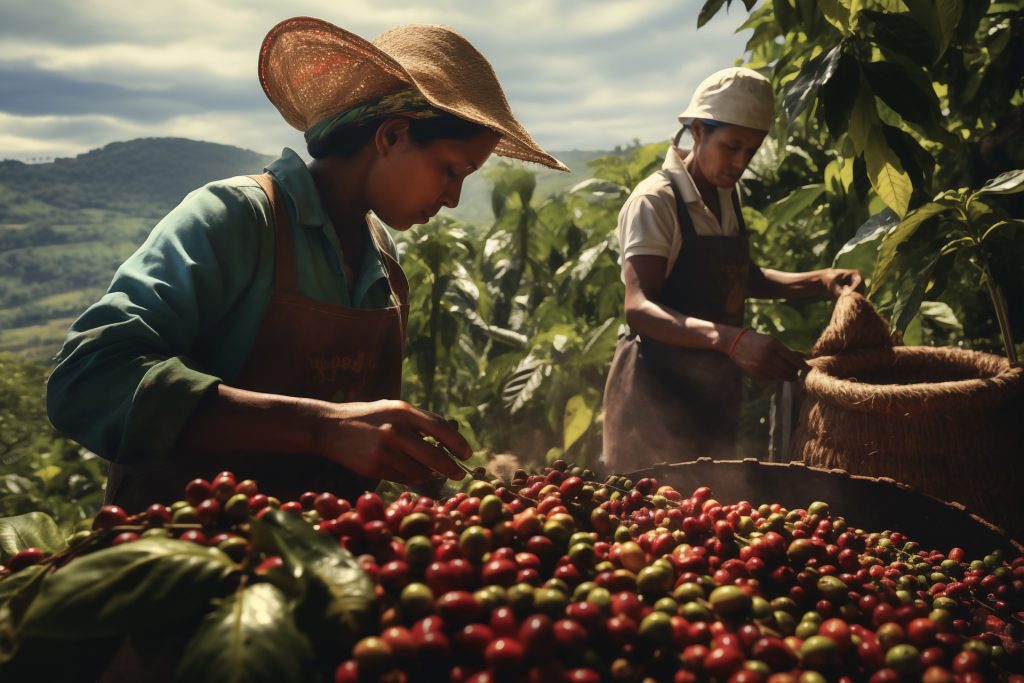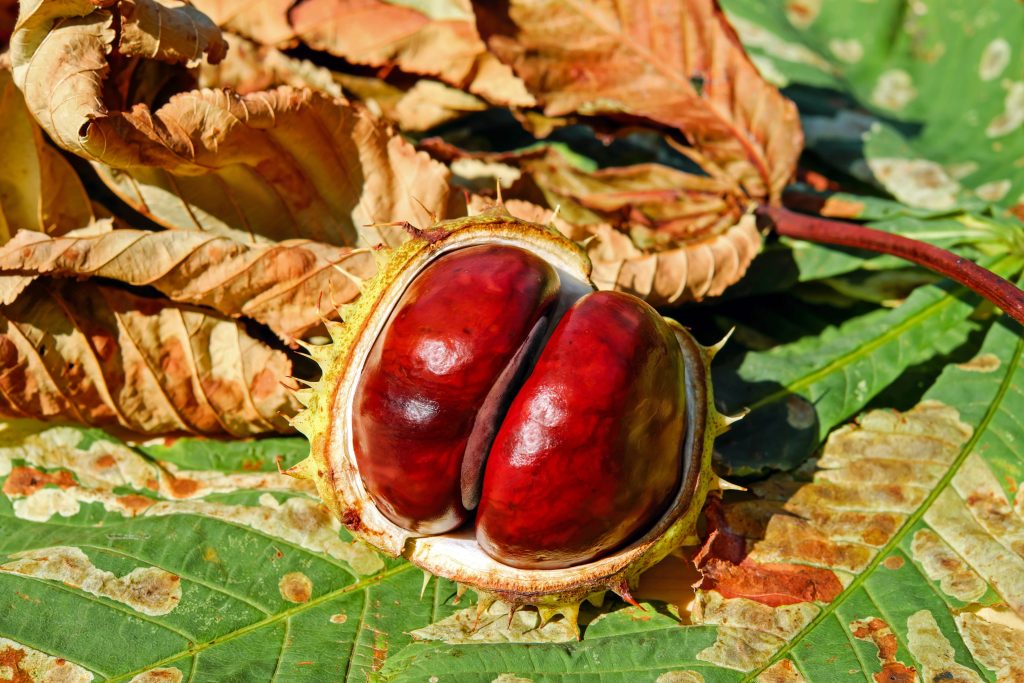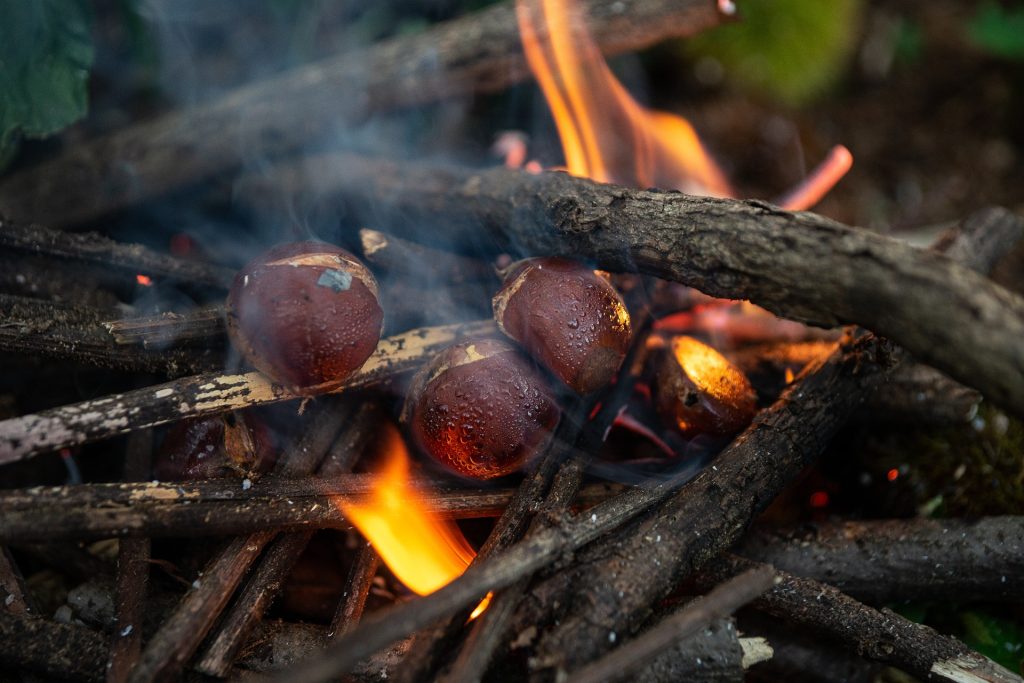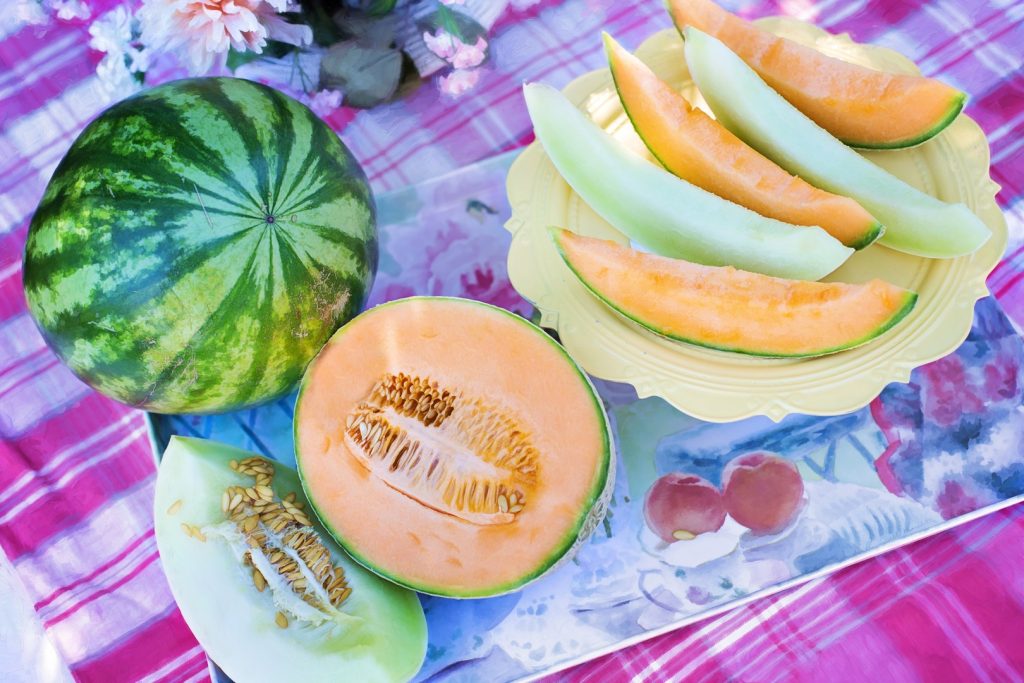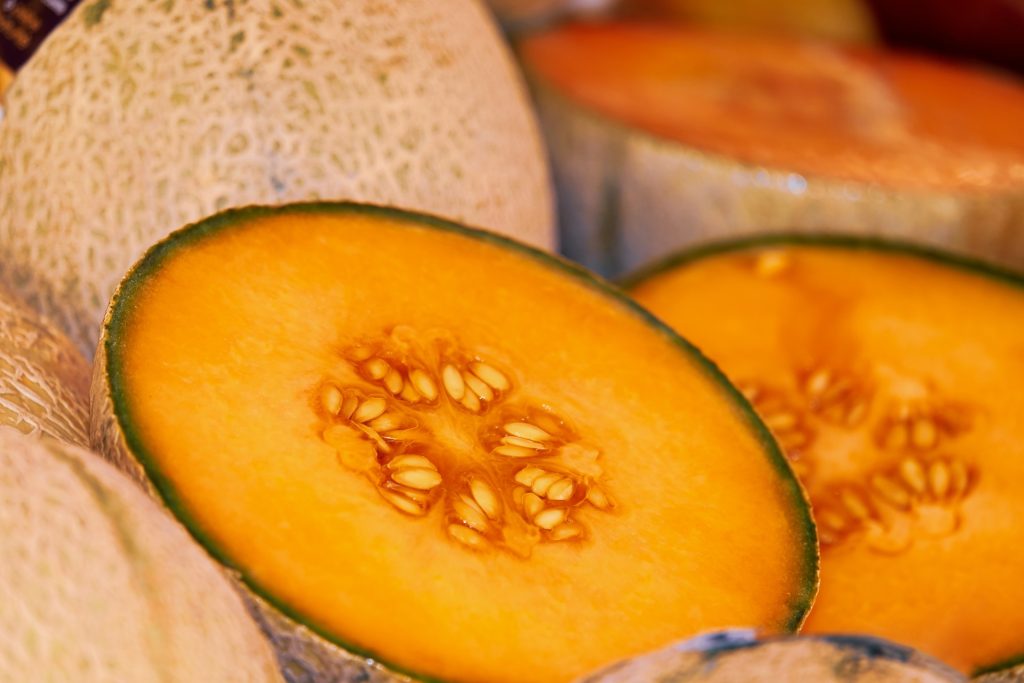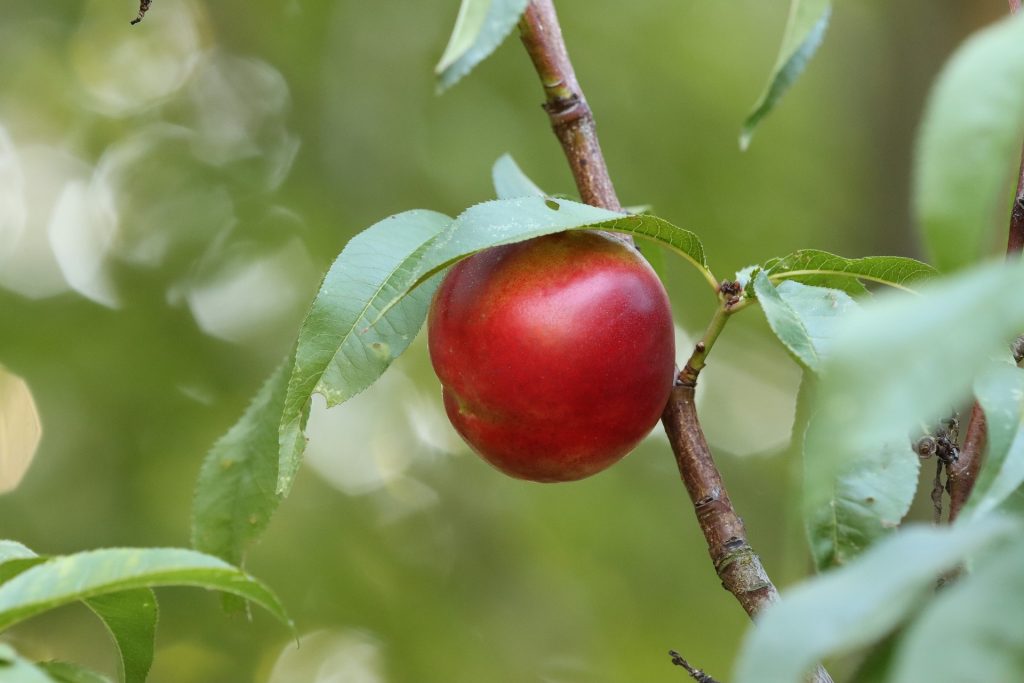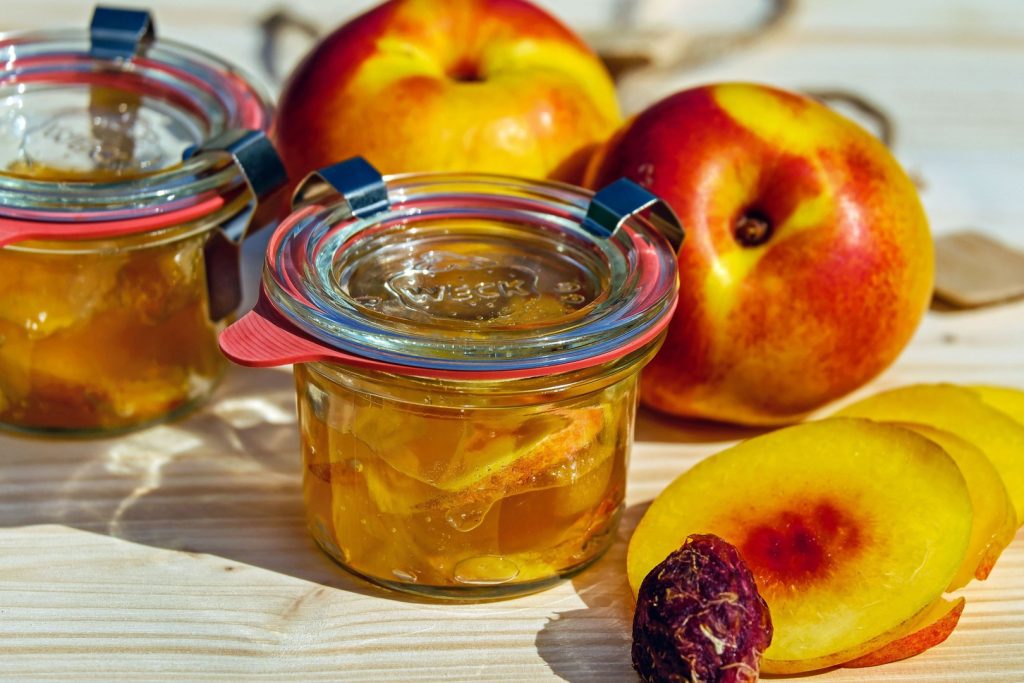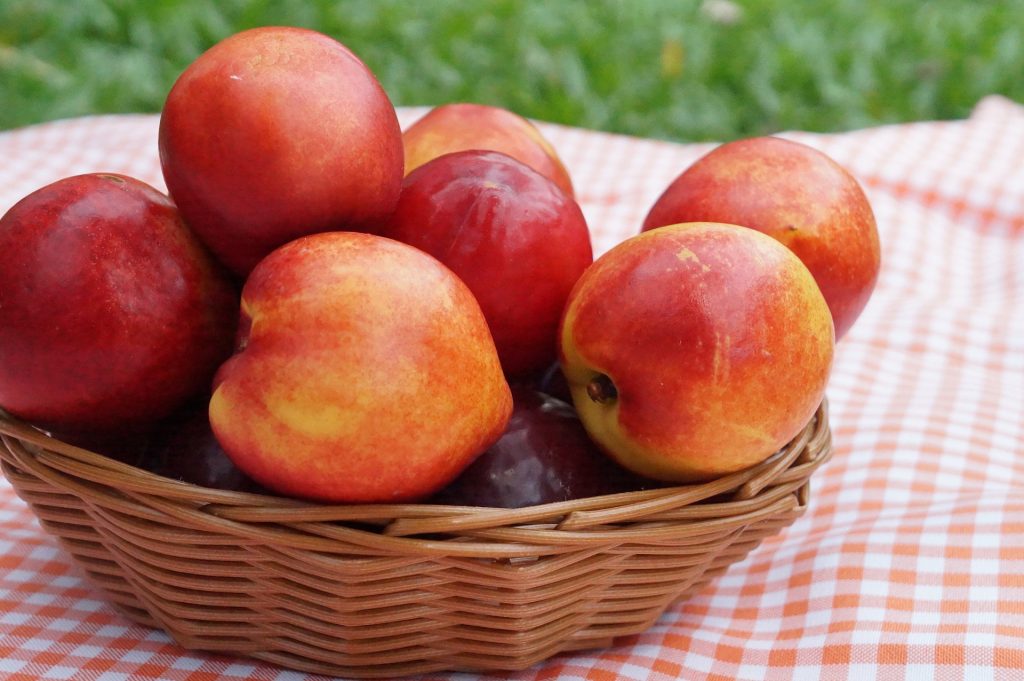Blog
Find articles that matter. From trading to shipping, trends to valuable goods, you can deep dive into everything you need.
Latest Posts
Blog
Summer is here, and with it comes an abundance of great summer vegetables ready to add some freshness to your meals. While many veggies (and fruits) are now available all year, there's nothing like biting into freshly grown corn or mixing up a salad loaded with luscious summer tomatoes.
Summer is also an excellent season to stock up on vegetables such as cucumbers, zucchini, and beans. As seasonal food and eating, in general, are a huge part of life in Turkey, it’s not a surprise that there are a lot of summer vegetables to enjoy.
So, what are the seasonal summer vegetables you should be importing from Turkey?
Cucumber
Cucumbers are a favorite crunchy addition to salads, as well as for snacking or pickling. They are high in essential minerals, as well as plant chemicals and antioxidants that may aid in treating and preventing certain illnesses.
They are also low in calories and high in water and soluble fiber, making them great for improving hydration and weight loss.
Tomatoes
The tomato is a versatile late summer vegetable that is extensively used in international cuisines. It is delicious whether directly from the vine or when slow-cooked, and even sweet enough to be churned into ice cream. It is one of the most widely produced crops, as they are used to make a variety of products such as canned tomato paste, ketchup, pickles, and tomato juice.
Turkey is third in the world in tomato production, with about 13 million tons produced each year. It is the most widely grown vegetable in Turkey, accounting for 42 percent of total vegetable production.
Peppers
Whether they are red, green, or bell, peppers are an indispensable part of almost every cuisine. Peppers come in every shape and size you can think of, from big and delicious to microscopic and spicy. They thrive in hot conditions, so summer is the perfect time to consume them.
In 2021, Turkey exported 192,266,805 kg of pepper, earning $199,437,051. When compared to the previous year, pepper exports increased by 27% in both quantity and value. Russia, Romania, and Germany are the top three nations importing the most veggies from Turkey in both 2020 and 2021, with demand growing year after year.
Zucchini
Zucchinis fall under the “summer squash” branch of the squash family. Summer squashes, unlike their autumn and winter counterparts, are plucked when their skin is still soft and delicious. The term "summer squash" relates to the gourd's limited shelf life in comparison to hard-shelled pumpkins.
Zucchini reigns supreme in this squash family, and it's perfect for frying, sautéing, steaming, grilling, or stewing. Bags of buttery squash blossoms may be found at your local farmers' market in late spring and early summer.
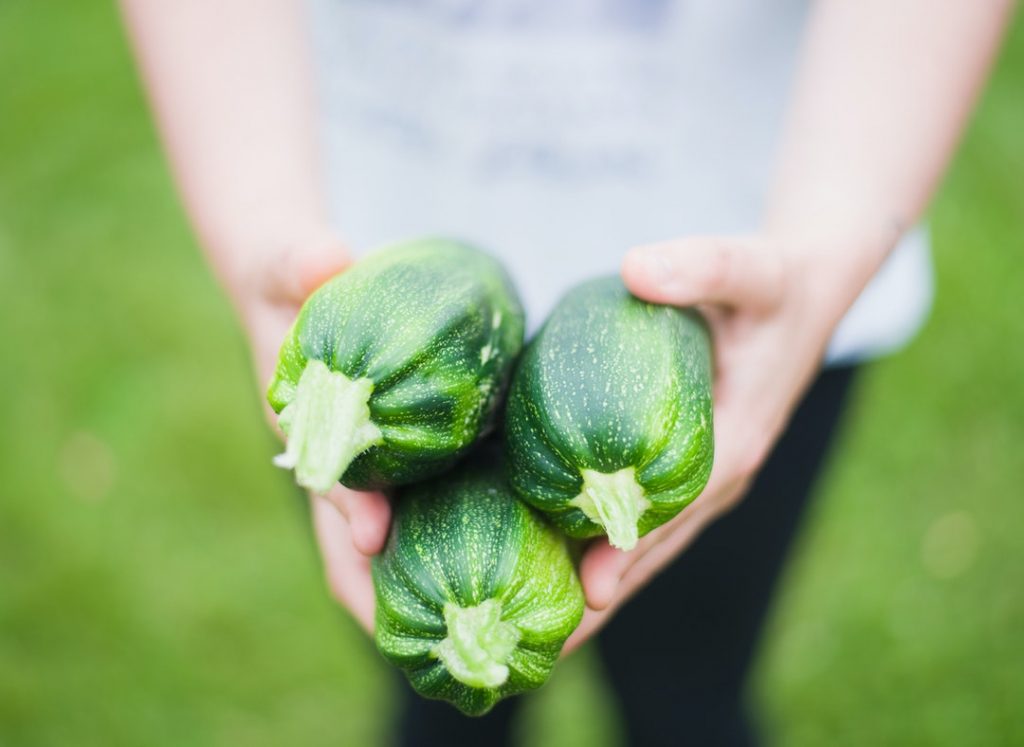
Beans
Summer is built for beans – not only baked beans but also three-bean salad and breaded, deep-fried beans because nothing tastes better than taking something nutritious and turning it into something delicious. They are probably one of the most readily available vegetables at the grocery store.
Bean production in Turkey was completed on an area of 88.9 thousand hectares during the 2019/20 crop season. The Central Anatolia Region supplied 62.1 percent of Turkey's bean production with 225 thousand tons in the 2019/20 crop season.
Aubergine
Aubergines are available in a variety of forms, sizes, and colors. Whether it's milky white or pitch black, aubergine is a versatile summer vegetable that may be grilled, fried, sautéed, or baked. Although officially a fruit, aubergines with mild flavors and delicate flesh are typically utilized as vegetables.
The bulbous, glossy, deep purple zeppelin form used in Mediterranean cuisine; the compact and plump ivory-colored aubergine from the United States and Australia; and the considerably smaller variants produced in Thailand are among them. They all have a moderately smokey flavor and a spongy texture when fresh but soft when cooked.
Corn
Corn is made up of rows of densely packed golden yellow kernels that grow along with a sturdy central core. When the kernels are mature, they are delicious and juicy, and they are best cooked simply with a little butter. The natural sugars in the kernels, like peas, quickly convert to starch, making the kernels harder and less sweet, thus they should be consumed as fresh as possible.
Corn is grown in over 60 provinces in the Black Sea Region, the Mediterranean Region, the Aegean, Marmara, and Southeastern Anatolia. While maize cultivated areas in Turkey ranged from 6.6 to 5.9 million hectares from 2014 to 2018, they climbed by 8% from the previous years to 6.4 million hectares in 2019. Corn output climbed by 8.3 percent to 6.5 million tons in 2020, from 6 million tons in 2019.
Okra
Okra is a summer vegetable used in West African, Indian, and Southern cooking. Producing fuzzy and fibrous pods, okra is a key ingredient in slow-simmered stews like gumbo or gravy-like curries.
Okra is abundant in nutrients while being low in calories. They include vitamin C, which helps with immune function. It also has a lot of vitamin K, which helps with blood clotting. Okra thrives in hot, humid areas. Turkey is one of the leading countries in producing okra.
Asparagus
Asparagus is the early shoots of a cultivated lily plant that requires a lot of work to mature. They're regarded as one of the world's treasures, with a price tag to match, and have a unique, deep savory flavor.
Turkey is one of the nations where asparagus is grown. The climatic zone in which Turkey is located is ideal for asparagus production. Muğla, Manisa, and Aydın are Turkey's most cultivated provinces.
Fresh Summer Vegetables from Turkey
Turkish Goods is a company that sources fruits and vegetables from Turkey's top suppliers and distributes them to wholesalers. Fresh and dried fruits, vegetables, greens, and nuts are exported in large quantities to nations all over the world.
Our extensive wholesale fruits and vegetables are provided all year, with each client receiving personalized planning of all export procedures from Turkey on an international standard. We provide the finest of Turkey directly to your doorstep.
Establishing a business has many different aspects that business owners need to deal with. After finally deciding on what kind of a business it will be and the business' niche, the most essential question surfaces. How will you choose the right products when it comes to sourcing? Which products are the best to import? Which products will make your business stand out?
Answering these questions will be fundamental to having a successful business. Because the products you will be importing and offering to your customers need to meet the current demand in your niche. However, that is not the only thing you should consider. All of these questions and even more will be answered in this blog post. Keep on reading to learn more about choosing the right products to import.
Choosing the Right Products to Import
Choosing the right products comes down to a few essentials. There are a few different things you need to consider as a business owner when it comes to choosing the right products to import. Because defining which product is right for your business is an important step and the answer will be different for each business. Depending on the niche of the business, the market trends and many other elements, the answer can change significantly. Let’s take a detailed look into each of these elements.
Know the Products Well
First of all, as a business owner, you need to know the products in your niche well. You need to be familiar with these products to a point where you can easily differentiate between low-quality and high-quality products. This is also helpful in knowing if a product is worth its sale price. If you want your business to stand out, you cannot achieve the success you are dreaming of with low-quality products.
Depending on your budget, you should examine the products well and choose the highest-quality products you can get. However, this will only be possible if you know the products in your niche well. On the other hand, it can be difficult to sell high-quality yet expensive products. Therefore, it is important to choose high-quality and affordable products.
Know the Market Trends
Market trends change constantly and a business owner must follow them closely. Trending products may change seasonally or annually, depending on the market and this strongly affects the demand for these products.
Following the market trends closely can help you choose the right products for that period. Because you know that your customers will be demanding those products soon or in that particular time period. This will not only meet the demand and help you gain customers, but it will also help you profit since the demand will be exceptionally high.
Choose Products That Will Sell
Even though this might sound similar to knowing market trends, it is slightly different. Certain products sell in certain niches regardless of the market trends that change over time. These items can be timeless products that the consumers in a certain niche are always demanding.
These items can also be the products you certainly know the consumers will love and buy.
Finding which products will be loved and purchased by your customers requires you to know the market as well as the target audience. Analyzing the consumer habits and the age range your business is attracting can help immensely in analyzing which products will sell. Choosing the products that will sell will help you gain consistent profit and it will also contribute to consumer satisfaction.
Find Unique Products
Knowing the market for your niche is also important to know which products are in demand or are expected to be in demand but cannot easily be found. If you can identify these unique products and source them, it will make your business stand out from the crowd. Consumers will prefer to shop from you since they can easily find any product that they are looking for. Therefore, analyzing the market and determining which products are scarce can be a great way of choosing some of the products you will import.
On the other hand, unique products can also be products with unique designs. Even though the product itself is common, its design or features can make it unique. Some consumers prefer products with unique designs. Therefore, it may be a good idea to opt for products with interesting features or designs for a change and make your business stand out.
Attend Trade Shows
International trade shows are great ways to meet manufacturers and suppliers from all around the world. It is also a great opportunity to learn more about the products in your niche, what is trending and which products are in demand. It is also one of the best ways to follow the latest developments in your field. Attending trade shows will not only help you choose the right products but it will also be a great networking opportunity.
You can find reliable manufacturers and suppliers for your business to source products consistently. You can travel to other countries to attend the most popular international trade shows in your field. Alternatively, you can also attend the popular trade show where you live. The local trade shows can help you meet local manufacturers and suppliers as well as international ones.
Choosing the Right Supplier Is as Important as Choosing the Right Products
Choosing the right products is important for sure. After considering the elements we have mentioned above and deciding on the products you want to import, there comes another important step. It is finding the right supplier. If you cannot find a reliable supplier, choosing the right products will not be enough. The supplier should be able to supply the products you are in need of. On top of that, the prices they offer should be affordable. The products should reach you in great condition and in time. It is true that finding all of these at once is quite difficult. But it is not impossible.
Turkish Goods offers over 1000 high-quality products in over 100 categories to its partners around the world. By working with a vast network of suppliers in Turkey, Turkish Goods is able to offer the best global wholesale price for each product. All you need to do is visit Turkish Goods, browse through a wide range of products and order whichever product you need. With a professional team working 24/7 and offering support in 13 languages, you will get a quotation in only 48 hours.
When you work with Turkish Goods, you also don’t need to worry about the importing process. Experts at Turkish Goods take care of the entire process from logistics to private labeling. Therefore, any product you need is only one click away. Turkish Goods will take care of the rest.
When it comes to planning the cargo procedure, the transportation mode is crucial. When deciding on the mode of transportation, you have to consider the cost, the urgency of the cargo, the value of the delivery products, as well as the size and weight of the commodities.
In short, there are several methods for transporting your cargo to its final destination. Products can move by road or rail through the land, by cargo ship across oceans and seas, and by freight carrier plane in the air. The question we’re often asked is; which mode of transportation is best for transporting my goods?
Finding the Right Mode of Transportation
Different types of goods require different types of transportation. The kind of goods transportation is determined by several factors:
- The company's products and their types, such as perishables or non-perishables, breakables, and so on.
- Production lead times from suppliers.
- Availability of the product.
- The source of supplies, i.e. the pick-up location, such as Turkey or elsewhere.
- Customs and Excise regulations, such as tariff and quarantine requirements.
- Volume.
There are various aspects to consider when deciding on the best form of transportation to get products from point A to point B. The choice of the appropriate method of transportation is crucial to the success of business and logistics management. Shipping and logistics expenses are significantly reduced when transportation equipment and modes are used effectively.
Which Transportation Method Is the Best?
A cargo voyage is typically multimodal, including the use of many modes of transportation to reach a destination. They'll most certainly go by road at the beginning and finish of the procedure, but what about in the middle? There are usually one or many basic modes of transport to select from when determining how your cargo is sent, and you should evaluate how your shipment will travel.
Choosing a primary means of transportation is a major choice that has a significant influence on elements such as delivery speed, shipping costs, and the risk of delay or damage. We'll go over the benefits and downsides of each form of transportation in this post.
Sea Freight
Sea freight is a means of shipping huge quantities of commodities by ship. Containers are filled with goods, which are subsequently put aboard a vessel. Sea freight is a cost-effective technique to transfer huge volumes across long distances because a typical cargo ship can carry roughly 18,000 containers.
Global reach
Sea movements can be more prone to the delay by poor weather and are typically slower, but they make up more than enough for the lack of speed with their reach. Nowadays, you may move cargo practically anywhere by water, as there is almost always a port of entry nearby.
Cost-Effective
For whatever amount of cargo, sea freight is extremely cost-effective. Large volumes of packaged products or bulk shipments can be transported by ships across long distances or short distances at a cost that is typically unmatched by other modes of transportation. Smaller amounts of bottles, cases, and pallets move at competitive pricing since freight forwarders may divide space in their containers among shippers.
Furthermore, companies are putting greater attention to the environmental effect of shipping. Sea freight is by far the most carbon-efficient mode of transport. Today, 90% of all goods reach their destinations via ocean routes, resulting in a giant and robust global shipping network.
Air Freight
Air Freight parcel delivery is the transfer and shipment of goods via an air carrier, whether charter or commercial. Such shipments travel out of commercial and passenger aviation routes to anywhere planes can fly and land.
Low risk
Air travel is a very safe way of transportation. Perishable commodities have a short shelf life, and high-value goods require strict security procedures, making them great candidates for air freight. Damage to packing is less likely to occur while en route since flight routes may be swiftly and easily changed in poor weather compared to other logistical transit modalities.
Any amount of goods
Large amounts of freight cargo can be transported by air. Larger freighters capable of carrying up to 110 tons can be fully chartered. This form of transportation is, of course, uncommon, but it is possible.
Fast delivery
Airfreight cargo is unrivaled when time is of the essence, as cargo planes often fly at speeds of over 900 kilometers per hour. Furthermore, cargo planes often fly on direct flight lines with little possibility of traffic congestion in the sky, which contributes to their unrivaled delivery speed. The expense of air freight, both financial and environmental, is the trade-off; it is the most expensive form of transportation and the largest source of carbon emissions.

Rail Freight
When it comes to in-land transportation, rail freight is an underutilized means of goods transportation. It's shockingly fast, safe, and dependable, with rare delays.
Efficient
Railroads are the most efficient form of land transportation, and one train can haul the equivalent of over 400 trucks. On average, longer journeys tend to be less expensive by rail. However, there are certain additional expenditures associated with train travel: at either end of the rail transportation, a road delivery is required. But when compared to road delivery for longer distances, rail still manages to be lower on the cost.
Sustainable
Also, rail freight transit is an environmentally friendly solution for in-land cargo transportation. Because it runs on electricity, it generates very little CO2 when transporting enormous freight loads over numerous carriages and long distances.
Security
Where rail freight transit excels is in the degree of security it offers for the commodities it transports. Railways and freight terminals are relatively secure areas with low levels of criminal activity, making them the safest means to convey products across the land.
Road Freight
One of the most prevalent types of transportation is road freight. It is widely used on several continents, including Europe, Africa, and North America. The unified customs paperwork process allows for the smooth flow of products between many states and nations.
Less paperwork
Road freight requires less documentation, especially if vehicles do not cross borders. The transfer of products by road is also typically swift since there are a plethora of haulers with a variety of vehicle sizes available to convey your cargo.
Vehicle selection
Another advantage of road freight transportation is the variety of vehicles accessible to you. Aside from the physical dimensions of the trucks, there are a variety of connected alternatives, such as flatbeds, low loaders, curtain-sided trailers, tail lifts, and container lifts, to mention a few. So, whatever your loading/unloading capabilities, size, or distance, there is a road freight truck accessible for you.
In conclusion
There are several options for transporting goods, and there may not be a single solution that meets your demands. Each form of transportation has benefits and drawbacks. When preparing your cargo and selecting the best mode of transport, it is critical to prioritize your demands, comprehend your package, and compare prices. Alternatively, you can work with Turkish Goods and let the experts choose the best transportation method for you.
Summer is a season when the weather in the northern hemisphere gets warmer and agricultural activities intensify, especially in the mid-rail countries. The optimum temperature in the summer months provides a suitable environment for the growth of many fruits. The leaves and flowers bloom in the spring, and the trees begin to bear fruit in the summer. Since fruits of all colors are grown in the summer season, you can consume any fruit you want according to your preferences. Due to its geographical location, Turkey has lands that are extremely suitable for fruit growing. So, what are the fruits you can import from Turkey in the summer?
What are the Main Characteristics of Summer Fruits?
The most basic features of the fruits grown in the summer months are that they are juicy and have a cooling effect. During the summer, the human body loses a lot of water, salt, and minerals through perspiration. Thanks to the juicy summer fruits, people prevent possible health problems by getting hydrated. Summer fruits also come to the fore with their fibrous structure, edema-relieving, and skin-renewing properties. Therefore, consuming summer fruits seasonably, when they attract you with their smells and tastes, is very beneficial for your health and your budget.
Where Does Turkey Stand on Fruit Export Data?
Despite the ongoing global impact of covid-19, Turkey has managed to increase its fruit exports in recent years. Turkey, which exports 2 billion 729 million dollars of fresh fruits and vegetables in 2020, recorded an increase of 13% in 2021. In 2021, fruit exports increased by 16% compared to the previous year and reached the level of 1 billion 252 million dollars. In the January-April period of 2022, fresh fruit and vegetable exports amounted to 972.7 million dollars. It is expected that the number of fruits to be exported will increase with the summer months. In turn, the export figures are expected to exceed the previous year.
Summer Fruits You Can Import from Turkey
Although the fruits grown in summer are generally red fruits, green, orange, and yellow fruits are also grown. Summer fruits that blossom on the ground and trees are generally fragrant and soft. Fruits such as watermelon and melons grow on the ground, while green plums, cherries, apricots, figs, pears, and grapes grow on trees.
Watermelon
The first fruit associated with the summer season is watermelon. Watermelon, mostly water, weighs about 5-20 kg. Watermelon has lots of seeds in the inner part and green and hard outer shell. Turkey is one of the most important watermelon producers in the world and exports watermelons, especially to Russia and European countries. Watermelon is a good source of antioxidants as well as vitamins A and C.
Melon
Just like watermelon, melon is a fruit that grows on the ground and has stones. With a thinner and smaller rind than watermelon, melon attracts attention with its delicious taste and smell. In addition to fighting cancer, melon is also an ideal fruit for those who have sleep problems. Turkey is one of the world's top melon-producing countries. Most melons are grown in the Adana, Konya, and Antalya provinces of Turkey.
Green plum
One of the most preferred summer fruits is the green plum. The green plum, loved by many with its juicy and sour structure, attracts attention with its fibrous structure. Plum, which accelerates metabolism, also fights bad breath. In many provinces of Turkey, green plums can be grown easily. Turkey is one of the world's top plum-producing countries, with an annual production of more than 200 thousand tons. Most exports are made to European countries, Russia, and Saudi Arabia.
Cherry
Cherry is a summer fruit that attracts attention with its sweet and juicy structure. It has a granular structure, is carefully collected from the tree branch, and delivered to the consumers. Cherries are very beneficial for health thanks to the antioxidants, iron, and vitamins A and C they contain. It is frequently used in diet programs with its edema-scavenging effect. Turkey, where many different cherry species are grown, is the leading country in world cherry production. Cherry production in Turkey is generally concentrated in the Aegean region.
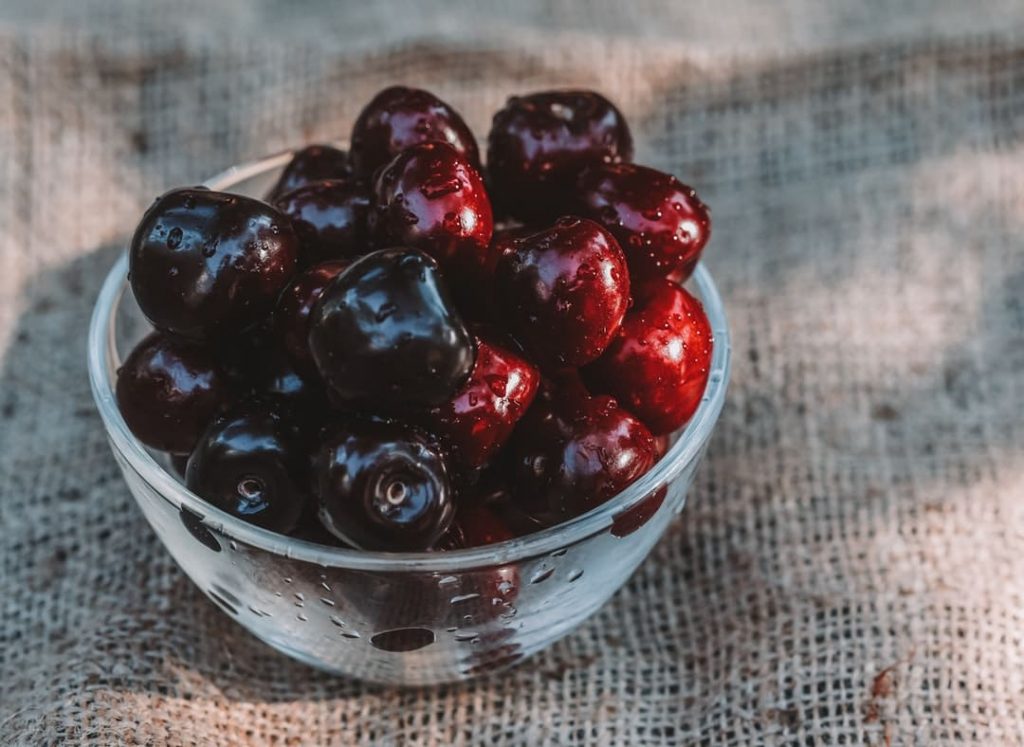
Apricot
Turkey is the world's largest producer of fresh and dried apricots. Malatya and Iğdır are the two provinces with the highest apricot production in Turkey. Apricot is in the group of yellow fruits and stands out with its fibrous structure and the beta carotene it contains. Those who have anemia and digestive problems can easily consume apricots. Apricots, which can be consumed in fresh, dry, and pureed forms, are also used to flavor other foods in desserts.
Fig
Fresh and dried forms of figs are produced in Turkey, just like apricots. Figs have many health benefits. In addition to the vitamins that it contains, it has a blood pressure balancing effect. Fig, which strengthens bone and muscle tissue, is a fruit mentioned in many holy books. Figs are grown in Turkey, especially in the Aegean region, where Aydın is the leading province in fig production. Turkey also realizes more than half of the fig production in the world.
Pear
The pear has an oval shape and is a yellow fruit. Pear, which is rich in vitamins C and K, is a serious source of potassium. Due to its high fiber content, it gives a feeling of satiety for a long time. Turkey is one of the most important pear producers in the world, and its annual production is more than 500 thousand tons. Bursa is the province where the most pears are grown in Turkey.
Grape
The grape has a clustered and granular structure and stands out with its purple and green varieties. In addition to being consumed as fresh, it is frequently used as raisins, in the production of vinegar and wine, and the pastry and bakery sectors. Grape, which stands out with its antioxidant effect, contains vitamin C and potassium. Turkey is one of the most important grape producers in the world. Most grapes are grown in the Aegean region and Central Anatolia region in Turkey.
Best Fruits from Turkey to the World
As Turkish Goods, we find the best summer fruits of Turkey for you. We provide inspections and controls on your behalf until you receive the product in all processes. If you want to procure products from the best fruit producers in the world, you can contact us.
Hazelnuts are grown in Europe and the United States and are encased in a smooth, firm brown shell. They are most usually marketed shelled. The cream-colored, sweet-tasting kernel is small and spherical, with a pointy tip. Because its thin, dark brown skin is slightly bitter, some people prefer to remove it before eating.
Hazelnuts are delicious in raw form, but they take on a more mellow, sweeter flavor when roasted. They are high in fat content, like all the other nuts. Thus, they will go rancid soon if not refrigerated.
The Corylus tree produces hazelnut. It is primarily grown in Turkey, Italy, Spain, and the United States. Hazelnuts, like other nuts, are packed in nutrients such as protein, lipids, vitamins, and minerals. Hazelnuts are high in nutritional value. Despite the fact that they are high in calories, they are high in nutrients and healthy fats. Being this popular, hazelnuts are one of the most traded and in-demand nuts in the world. The importers from around the world are looking for top-quality hazelnuts. Here are the world's top exporters of hazelnuts.
Hazelnut Trade in the World
The global hazelnut output varies according to the meteorological conditions from year to year. Global production has increased the same as Turkey's production. While Turkey's average in-shell production is 350-400.000 tonnes, this figure has recently risen to 500.000 tonnes. Italy and Spain are two other important producing countries. They produce between 100-125 thousand and 15-25 thousand tonnes, respectively. To meet domestic demand, the United States consumes the majority of its own hazelnut crop and imports hazelnut kernel. However, by increasing output in recent years, it has become a significant hazelnut exporting country with 25 thousand tonnes.
Turkey
The country is a northern hemisphere bridge between Asia and Europe, with coasts on three sides. Turkey is the world's top hazelnut producer and exporter. The hazelnut is one of the world's most important nut crops, with its beginnings in Anatolia's center. Anatolia contains wild species that have given the source for today's produced types. It is possible to reach the best hazelnuts just in 48 hours with Turkish Goods! Contact Turkish Goods for quality products.
Hazelnuts grow in both the eastern and western regions of Turkey around the Black Sea, in sites where other crops cannot be grown. The crop's ability to prevent soil erosion is an additional benefit for hazelnut growing areas with high rainfall. Approximately two to three million producers rely on hazelnut production for a living. That's why the hazelnut exports of Turkey are strategically important. According to TUIK data, the hazelnut planting area was 555 thousand hectares in 2001. It significantly increased by 32% in 2020. It reached an area of approximately 734 thousand hectares.
Considering the average data for the last 5 years, Turkey's hazelnut production is 610 thousand tons on average. That number covers 62% of productions in the whole world. In 2020, Turkey’s hazelnut exports were $1.12B. That covers 60% of the hazelnut exports in the world. Hazelnut export numbers of Turkey are consistent and Turkey has been the most important exporter for a long time.
Production per decare in Turkey is lower than in producer countries such as the USA and Georgia. The average hazelnut yield of Turkey for 5 years is 84 kg per decare while the USA's yield is 221 kg per decare.
Italy
Italy produces 110.000 tons of hazelnuts. The Italian hazelnut producing area is projected to stay steady in the foreseeable future. Italy's production will be mostly determined by weather conditions and the trees' alternate bearing. The hazelnut industry is centered in four regions. Campania accounts for nearly half of total production. Piemonte, Latium, and Sicily account for the remainder.
In 2020, Italy exported $221M worth of hazelnuts. It makes Italy the second-best exporter in the world. Furthermore, Italy is one of the fastest-growing countries in exports of hazelnuts. Between 2019 and 2020, Italy's hazelnut exports surged by 11.3%

Chile
Chile is a rising star in Hazelnut exports. The country is the top producer of hazelnuts in the southern hemisphere, with the majority of the production shipped to Europe and the United States. In 2020, Chile's hazelnut exports surged to 18,225 tonnes from 12,061 tonnes in 2019. Furthermore, between 2017 and 2019, Chile's hazelnut exports grew by 45.4%, earning the nation $87.34M. The production of hazelnut in Chile was 70,000 tonnes in 2019. Chile's 2020 hazelnut export numbers rose even more. Chile exported $143M worth of hazelnuts in that year. Furthermore, exports of hazelnuts grew by 62.5% between 2019 and 2020. It will likely continue to rise.
Azerbaijan
Azerbaijan is one of the world's largest hazelnut-producing countries due to its good climate conditions for hazelnut production. Considering its close proximity to Turkey, it is quite normal.
Hazelnuts are among the most profitable agricultural products in the country. There are several types of hazelnuts, such as Atababa, Ashrafli, Ghalib, Ganja, and Khachmaz in Azerbaijan. Hazelnuts are especially popular in Azerbaijan's northwestern areas. Azerbaijan was the world's fourth-largest shelled hazelnut exporter in 2015-2016, after Turkey, Georgia, and Italy. It still holds its spot among the top exporters. Azerbaijan is currently ranked the fourth-best hazelnut exporter in the world. In 2020, Azerbaijan exported $115M worth of hazelnuts. That's 6.14% of the whole world. Yet, Azerbaijan's export numbers are decreasing lately. Between 2019 and 2020, Azerbaijan's hazelnut exports decreased by 10.8%.
Georgia
Even if Georgia is in the top 5, Georgia doesn't seem likely to stay on top. Data looks good for Georgia, yet, in just three months of the new hazelnut season, Georgia had 19 rejections at EU borders. Even though the quality of Georgia's hazelnuts seems relatively bad, Georgian hazelnut export volume was the largest in the last five years. Moreover, in 2020, Georgia exported $83M worth of hazelnuts. It's 6.64% of the world's hazelnut exports. That is a huge number. On the other hand, the exports will likely decrease if the problems aren't fixed.
The food sector offers several chances for education, innovation, networking, and discovery. This is thanks to the trade exhibitions and other events that happen throughout the year.
For ages, trade exhibitions have been an important sales and marketing strategy. They provide a professional setting for businesses to promote their products, share knowledge, and discuss industry trends.
Here are the major upcoming food expositions and events in Turkey that you shouldn’t miss in 2022.
CNR Food Istanbul
CNR Food Istanbul is a worldwide business-to-business meeting point. At the Expo, visitors may learn about the newest advances and obtain a broad outlook on industrial variety. The fair is a one-of-a-kind commercial platform that will help the industry strengthen its position in global competition by guiding it to generate more value-added, innovative, trustworthy, and certified consumer goods.
CNR Food Istanbul plans to be arranged on 60,000 sqm of space with over 1,000 brands, attracting 35,000 professional visitors. And it is backed by the Istanbul Exporters' Association. Professionals from the food and beverage sectors around the world will come together in one place.
Drawing a lot of attention from exhibitors and visitors in 2021, CNR Food Istanbul will continue to attract visitors between August 31 and September 3, 2022.
CNR Food Istanbul in 2021
CNR Food Istanbul 2021 welcomed over 2,000 brands from over 20 countries. The Netherlands, Iraq, Iran, Macedonia, Kosovo, Albania, Afghanistan, France, Ukraine, and Russia were all represented by food and beverage companies. Many more countries participated in the Expo, including Lithuania, Somalia, Jordan, Afghanistan, Uzbekistan, Armenia, and Poland.
Stars of the Expo were the Chocolate and Confectionery Special Section, and the Special Drinks and Gourmet Special Section.
A new milestone has been reached in the promotion of Turkey's food and beverage sector, with the Special Drinks and Gourmet Special Department. It was established in 2021 with the official approval of the Ministry of Agriculture and Forestry.
According to the official statement, around 2,500 buyers from various countries visited the Expo. And it was held at the CNR Expo Istanbul Expo Center. These nations included Poland, Greece, Iraq, the Netherlands, India, Kenya, Somalia, Uzbekistan, Czechia, Albania, Macedonia, and Hungary.
Mersin Gıda
The largest food platform in the Mediterranean, Mersin Gıda, assembles the whole food sector in Mersin. And over the years it has become an important center of food production and exportation for Turkey.
Hundreds of product varieties, ranging from citrus fruits to frozen food, seafood, olive oil, tahini, pulses, and ready meals, are presented at Mersin Gıda. In fact, it quickly became the industry and region's most significant gathering place. Tens of thousands of goods from more than 100 local and foreign firms were presented for the first time at the expo. The event was hosted across a 15 thousand square meter space. With B2B contacts, the expo helped the sector to identify new markets and become more visible in foreign markets.
Mersin Gıda assembled the whole food industry in Mersin, and it has become an important hub for food production in Turkey as well as exportation. Industry professionals from the Middle East, South Africa, and the Balkans attended the Expo. And they were accompanied by the Turkish Republic of North Cyprus, Eastern Europe, and Arabian countries.
The fair will be held for the 9th time between 23-26 November 2022.
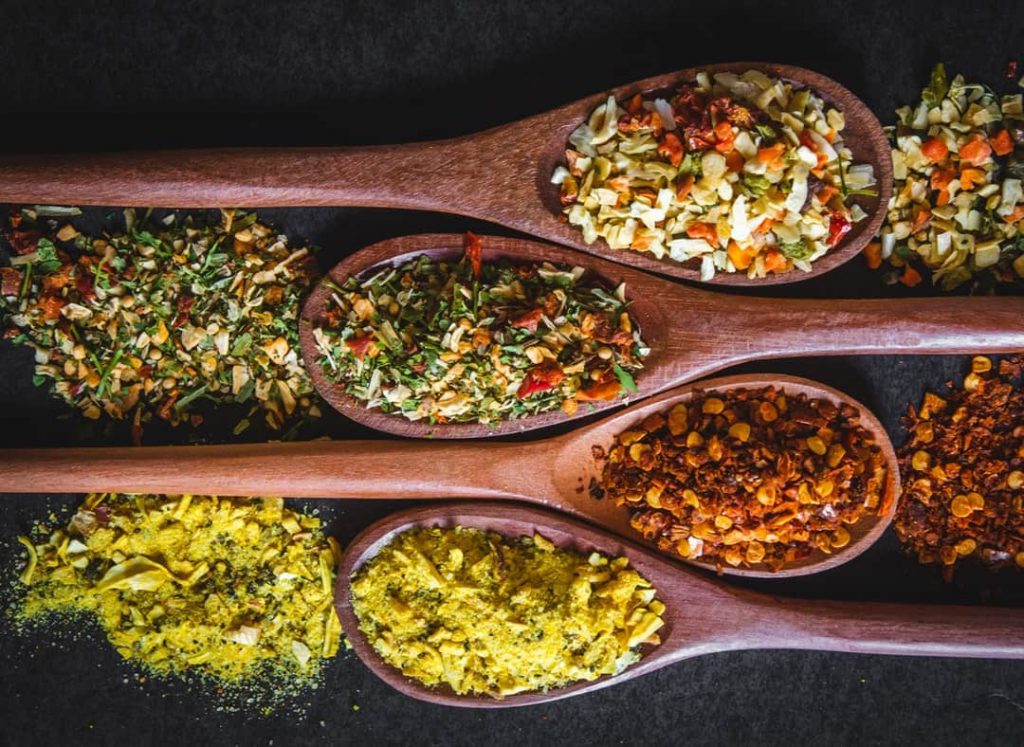
Ekoloji Izmir Fair
Ekoloji Izmir Fair, Turkey's first certified organic product fair, will be held for the 11th time on May 26-29, 2022. It will be organized by IZFAŞ in collaboration with associations for ecological agriculture (ETO). From organic clothing to baby products, cosmetics to food and cleaning products, a diverse range of innovative products will be on display at Ekoloji Izmir Fair.
In its 11th year, the fair offers a wonderful chance for industry players by bringing together national and international visitors for critical business interactions. Ekoloji Izmir will be held concurrently with OLIVTECH Fair. And it will continue to be fascinating for industry experts as well as consumers with parallel events in "fuarizmir" in May.
One of the main aims of the Ekoloji Izmir Fair is to increase Turkey's position in the global ecological market. Additionally, it aims to add to Turkey’s exponential growth which rose 500% in the past decade. Purchasing committees from the United States, Germany, France, Lebanon, Macedonia, Poland, Slovenia, Tajikistan, and Ukraine interact with producers and exporters in this context.
At the fair, farmers who grow organic products also have the opportunity to present their products to consumers.
WorldFood Istanbul
WorldFood Istanbul is Turkey's largest food and beverage show. It has been a reliable market entry point. It reflects industry trends and begins international collaboration. And the Expo also aims to introduce the most recent food and beverage items to the Turkish market. It is also one of the most important Asian culinary shows in the world, with worldwide participation.
Here, firms from all around the world present the newest trends, products, and technology in food production and marketing. The WorldFood is an industry communication and information platform. It provides participants with the chance to promote themselves to a large audience.
WorldFood Istanbul also works in conjunction with the concurrent exhibition Ipack. Ipack Turkey is a food processing, storage, packaging materials, and equipment fair. A wide range of packaging, packaging machines, food processing machinery & main parts, auxiliary equipment & systems are exhibited worldwide. This strategic alliance gives the participants the possibility to collaborate on a larger scale.
WorldFood Istanbul, the worldwide meeting place for the Turkish food sector, is set to offer many new items to the food world. With the expected participation of over 1,000 businesses at the TUYAP Fair, Convention, and Congress Center, it will run from September 1st to 4th, 2022.
Of course, mentioned events are just a drop in the ocean of food exhibitions. But these are certainly the most prestigious ones you shouldn't miss. So, if you find yourself in Turkey, we strongly advise you to visit these fairs in 2022.

